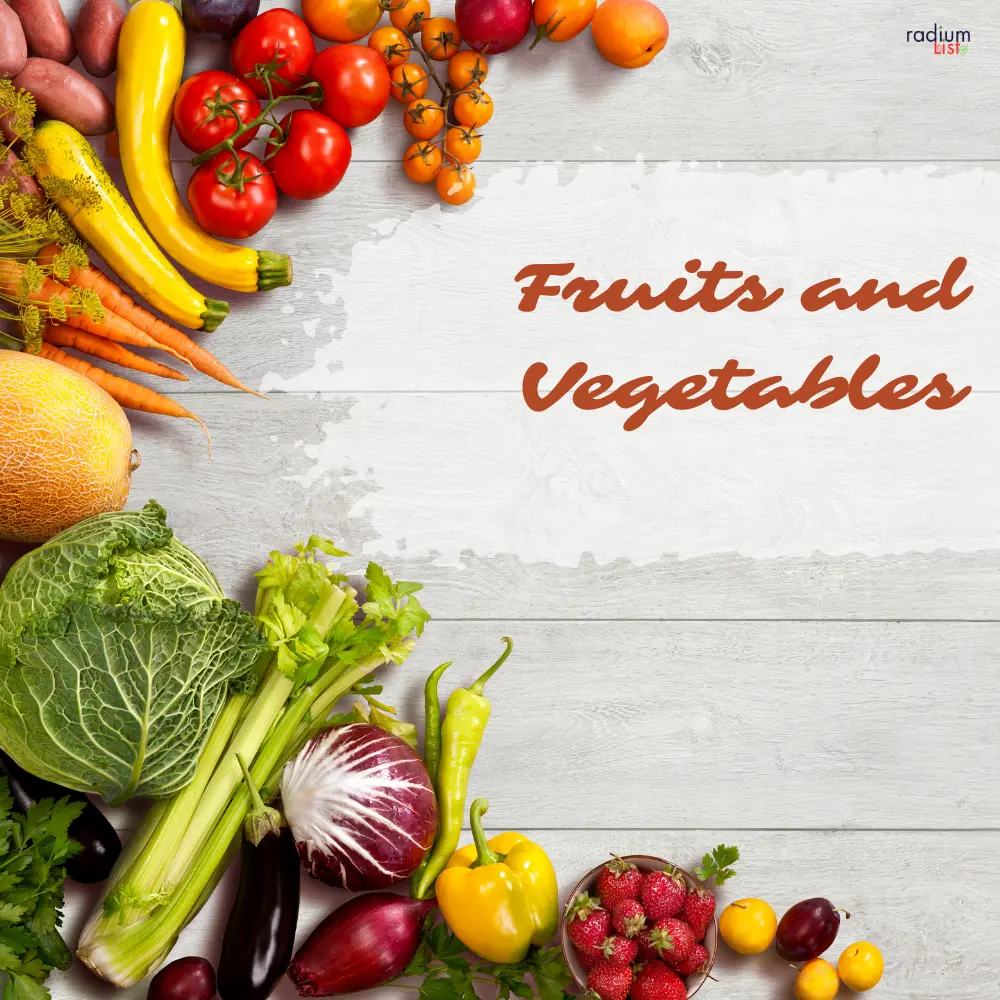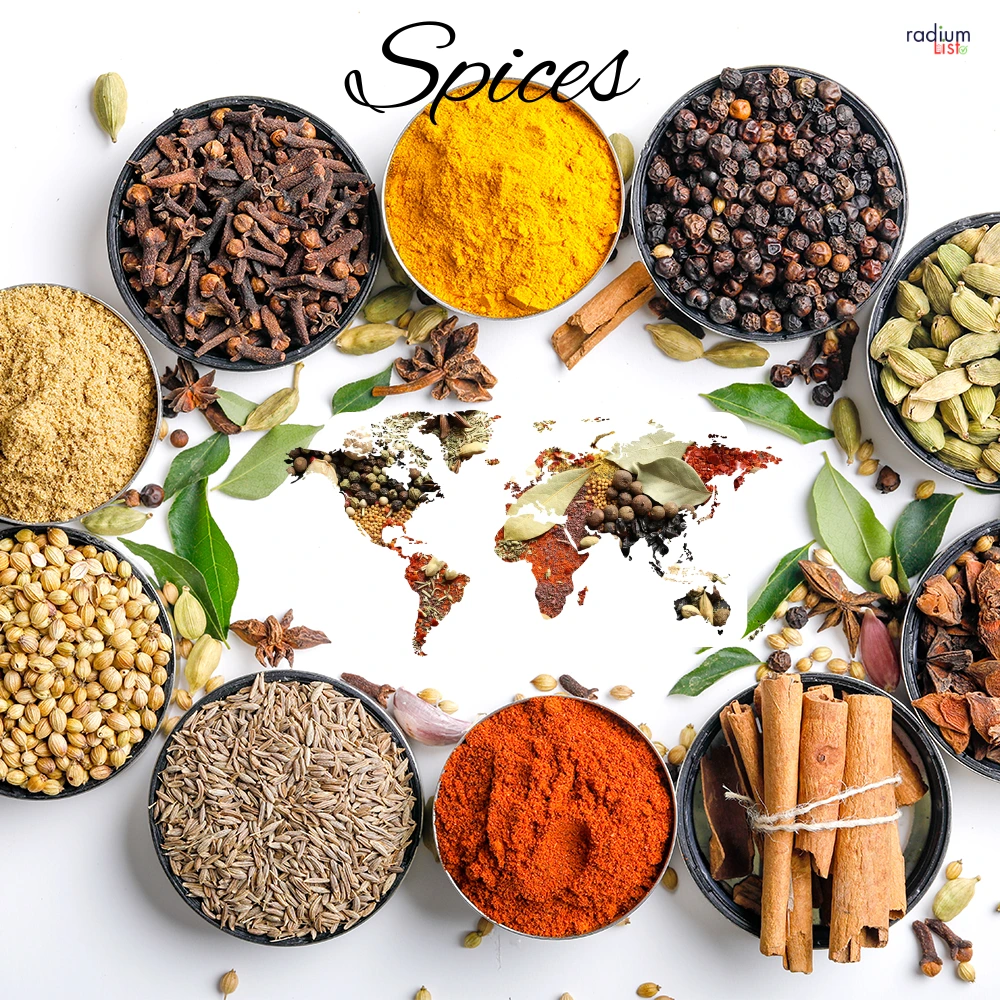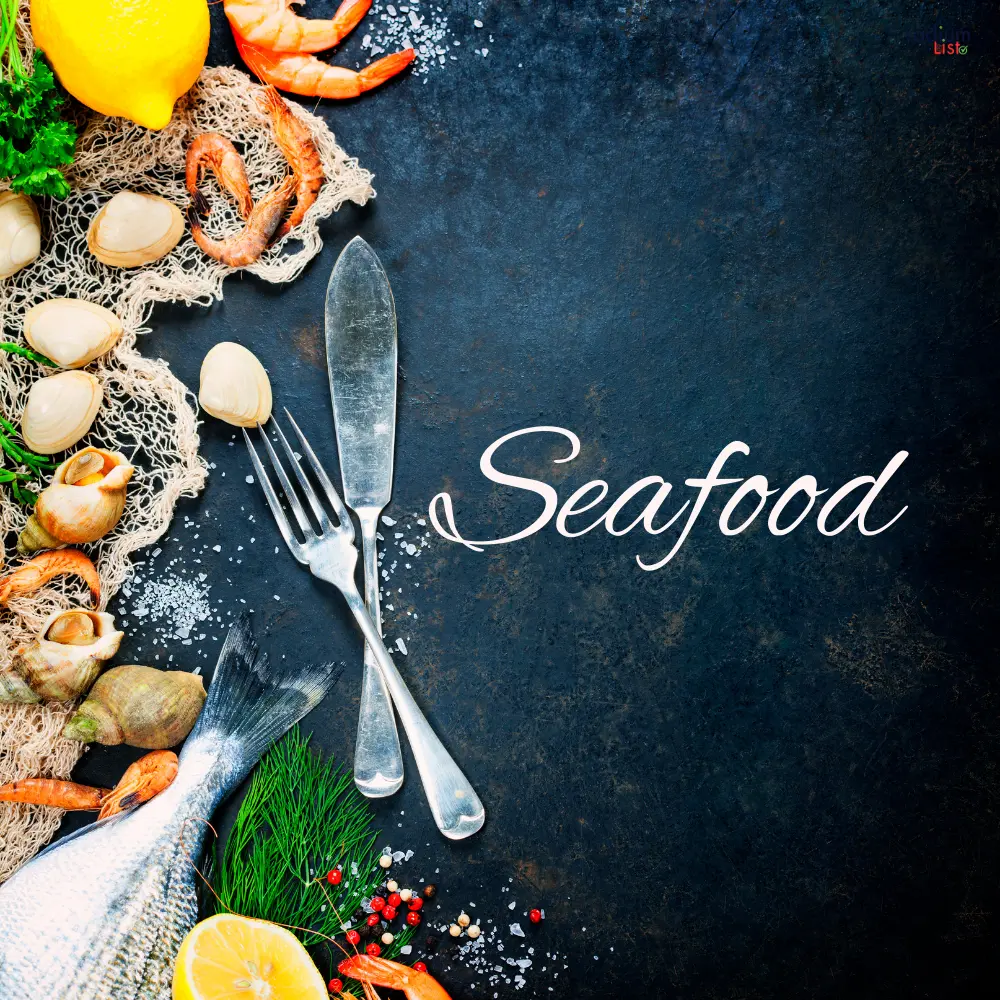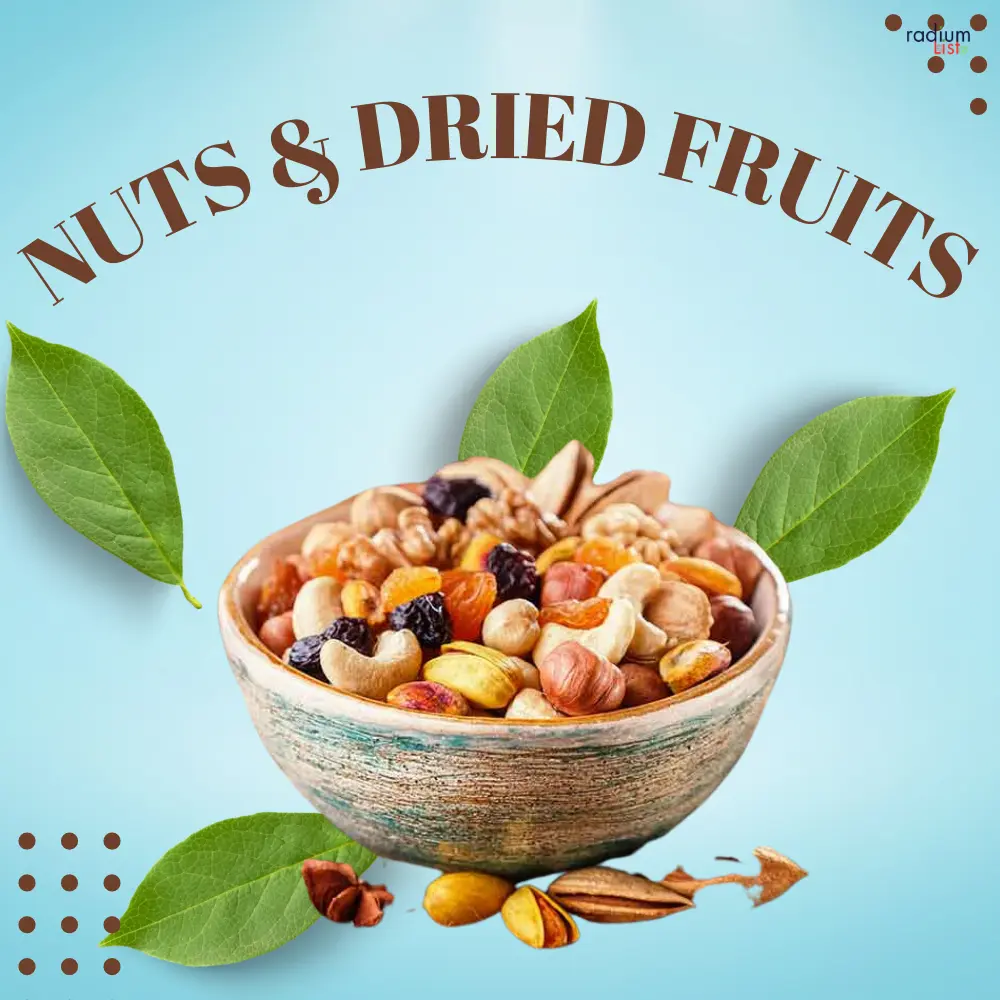Top 10 Food Products Imported In India
India ,Known for its Diverse Culture and Culinary heritage ,has a rapidly growing food industry that caters to the Preferences and tastes of its 1.3 billion population. While the Country Boasts a Rich array of local produce and culinary traditions ,its Appetite for international flavors has also been on the rise. To satisfy this Demand and Expand Culinary Horizons ,India relies on Imports of Various Food products from different parts of the World.
Top 10 Food Products Imported In India
Edible Oils
India stands as a prominent global consumer of edible oils, relying heavily on imports to satiate its voracious appetite for these essential culinary ingredients. The nation’s culinary landscape is a rich tapestry woven with diverse flavors, and to meet its domestic demand, India imports substantial quantities of palm oil, soybean oil, sunflower oil, and canola oil.
Palm oil, extracted from the fruit of oil palms, takes a vital place on India’s tables, finding its way into an array of dishes, from traditional curries to modern baked goods. The tropical climates of countries like Indonesia and Malaysia, major palm oil producers, make them ideal sources for India’s palm oil imports.
Soybean oil, derived from soybeans, plays a multifaceted role in Indian cooking. It is a popular choice for frying due to it’s high smoke point & neutral flavor. India’s reliance on soybean oil often leads to import’s from countries like the United States and Argentina, where vast soybean plantations thrive.
Sunflower oil, with its light flavor & versatility, graces Indian kitchens, enhancing everything from sautés to salads. Countries like Ukraine and Russia contribute to India’s sunflower oil imports, supplying a culinary essential that enriches the nation’s gastronomic diversity.
Canola oil, known for its Heart-Healthy attributes, has also found a niche within India’s culinary traditions. Its mild taste and favorable nutritional profile make it a sought-after choice for Health-conscious consumers. Canada, a major global producer of canola oil, contributes significantly to India’s imports of this golden elixir.
While India boasts a rich history of oilseed cultivation, the escalating demand for edible oils, driven by population growth and evolving dietary preferences, has led to substantial imports. These imported oils seamlessly integrate into the country’s culinary canvas, facilitating the creation of a myriad of delectable dishes that reflect India’s cultural dynamism.
In essence, India’s status as a significant importer of palm oil, Soybean oil, Sunflower oil, & Canola oil underscores the nation’s ever-evolving gastronomic landscape. These imports, sourced from around the world, contribute to the mosaic of flavors that define India’s culinary identity, Enhancing it’s cuisine & enriching the lives of its people.
Pulses
Pulses, a category of leguminous crops that includes lentils, chickpeas, and kidney beans, hold immense significance in the dietary habits of India. These nutrient-rich staples are not only a source of essential proteins but also contribute to the traditional flavors of Indian cuisine. Despite their cultural and nutritional importance, India faces a persistent challenge in meeting the robust demand for pulses due to inadequate domestic production. As a result, the country relies heavily on imports to bridge this supply gap.
India’s population, second only to China’s, places substantial pressure on its agricultural resources to sustainably produce pulses. However, factors such as limited arable land, variable weather conditions, and pest-related challenges have hindered domestic output. This disparity between demand and supply has prompted India to seek pulses from foreign markets.
Among the major pulse-importing nations, Canada, Myanmar, and Australia have emerged as key partners for India. Canada, renowned for its high-quality lentils, plays a pivotal role in meeting India’s lentil requirements. Myanmar, a neighboring country, serves as a significant source of chickpeas, while Australia contributes kidney beans to the Indian market.
These import partnerships are essential for ensuring a consistent supply of pulses to Indian consumers. Importing pulses helps stabilize domestic prices, curb inflation, and maintain food security. Moreover, it aids in catering to the diverse culinary preferences of a population known for its rich gastronomic heritage.
To address the challenge of insufficient domestic production, the Indian government has implemented initiatives to boost pulse cultivation. These include research and development efforts, technology dissemination, and the promotion of sustainable agricultural practices. While progress is being made, the reliance on imports underscores the need for a balanced approach that combines increased domestic production with strategic imports to meet the pulses demand.
Dairy Products
India’s dairy industry stands as one of the largest & most diverse in the world, yet the demand for imported dairy products persists. While the country boasts a substantial production of milk & Dairy goods, there remains a consistent need for imported items like Cheese, Butter, & Milk powder. These imports play a crucial role in meeting market requirements & satisfying the ever-growing consumer demand for dairy products.

Despite India’s proficiency in milk production, certain specialized dairy products often require specific processing techniques and quality standards that may not be readily available domestically. This gap is addressed through imports, allowing consumers access to a wider range of dairy options, including various types of cheese, high-quality butter, and milk powder for various culinary and industrial purposes.
The importation of dairy products also contributes to diversifying consumer choices and enhancing the overall gastronomic experience. Imported cheeses, with their unique textures & Flavors, offer culinary versatility & cater to the evolving tastes of a population with diverse preferences.
Moreover, the growing demand for dairy products, driven by a rising middle class & changing dietary habits, has led to a need for consistent & diverse supplies. Importing dairy products helps balance this demand-supply gap, maintain price stability, & ensure that the market remains adequately stocked with the desired products.
Fruits and Vegetables
India’s vibrant agricultural landscape boasts a rich array of fruits and vegetables, yet the import of these essential commodities remains a pivotal component of the country’s food supply strategy. The practice of importing fruits and vegetables, particularly during off-seasons or when domestic production falls short, ensures a consistent and diverse availability of these vital dietary components.
Apples, grapes, oranges, and tomatoes are among the staple items that India imports to fulfill consumer demand and maintain a steady supply. The off-season, when certain fruits and vegetables are not locally available due to climatic conditions, prompts the need for imports. During these periods, importing ensures that consumers can continue to enjoy their favored produce year-round.
Furthermore, importing these items allows Indian consumers to savor global flavors and experience a wider culinary spectrum. Imported fruits and vegetables bring diversity to the table, introducing new tastes and textures that enrich the country’s gastronomic landscape. Apples from distant orchards, grapes from international vineyards, and juicy oranges from across the seas become integral parts of the Indian diet.
Imported tomatoes, often utilized extensively in various dishes, contribute to maintaining the availability of this versatile ingredient even when local cultivation faces challenges. By bridging the supply gap, imports support culinary traditions and ensure the stability of prices, promoting a favorable environment for both producers and consumers.

India’s agricultural practices are influenced by diverse factors, including weather, geographical variations, and changing consumer preferences. While domestic production remains robust, the import of fruits and vegetables serves as a pragmatic strategy to address temporary shortages and offer a broader selection.
In conclusion, India’s practice of importing fruits and vegetables such as apples, grapes, oranges, and tomatoes complements its thriving agricultural sector. These imports are particularly crucial during off-seasons or periods of insufficient domestic production. By providing access to diverse and globally sourced produce, India’s import strategy ensures the fulfillment of consumer preferences, maintains food security, and enriches the nation’s culinary traditions.
Alcoholic Beverages
The landscape of alcoholic beverages in India is evolving rapidly, driven by a growing consumer base and shifting preferences. The surge in demand for imported alcoholic beverages reflects the changing tastes & aspirations of a diverse population. Among the sought-after imports are wines, Whiskeys & Beers, sourced from renowned countries such as France, Italy & Scotland.
The rise in disposable income, urbanization & exposure to global trends has led to an increased appreciation for international alcoholic beverages. Wines from the rolling vineyards of France and Italy capture the essence of Old World winemaking, offering a spectrum of flavors & aromas that appeal to a discerning palate. These imported wines provide an opportunity for consumers to explore diverse grape Varietals & Terroirs, enhancing the wine-drinking experience.

Similarly, the allure of imported Whiskeys, Particularly those from Scotland, adds a touch of sophistication to India’s burgeoning drinking culture. Scotch whiskey, known for it’s rich history & distinctive production methods, resonates with enthusiasts seeking the embodiment of tradition & craftsmanship in each sip.
Furthermore, imported beers contribute to the dynamic landscape of alcoholic beverages in India. Brews from various corners of the world, renowned for their unique brewing techniques and distinctive flavors, introduce consumers to a global array of beer styles beyond the traditional options.
The demand for imported alcoholic beverages reflects a desire for novelty, authenticity, and an elevated drinking experience. These imports cater to the evolving tastes of consumers who seek to expand their horizons and indulge in premium libations. In response, businesses have curated selections that showcase the best offerings from renowned international producers, fostering a vibrant market for imported alcoholic beverages.
As India’s consumption patterns continue to evolve, the import of wines, whiskeys, and beers has transformed the country’s drinking landscape. These imported beverages not only satisfy demand but also contribute to a cultural shift towards a more diverse and cosmopolitan drinking culture. In an era of global connectivity, imported alcoholic beverages offer a tantalizing glimpse into the traditions, artistry, and flavors of far-flung regions, enhancing the overall drinking experience for a growing number of enthusiasts.
Coffee
While India’s tea production is renowned globally, coffee has also secured a significant place as a beloved beverage in the country. Amidst the tea-dominated landscape, coffee has carved a niche for itself, becoming a popular choice among discerning consumers. To cater to the growing demand for premium quality coffee, India imports coffee beans, notably of the Arabica & Robusta varieties.
Although India has a rich tradition of coffee cultivation, particularly in regions like Karnataka, Kerala, & Tamil Nadu, the demand for coffee has surged beyond domestic production. Coffee enthusiasts in India, Seeking an array of flavors & profiles, have fostered a preference for imported coffee beans, especially those of the Arabica & Robusta varieties.
Arabica beans, celebrated for their delicate flavors & nuanced aromas, are imported to satiate the palates of those who appreciate a milder & more complex coffee experience. On the other hand, Robusta beans, known for their bold and robust flavors, cater to individuals who prefer a more robust and intense coffee profile.
Imported coffee beans, with their distinct characteristics and regional nuances, enrich the coffee-drinking culture in India. They add a layer of diversity to the coffee landscape, allowing consumer’s to explore the vibrant spectrum of flavors that coffee has to offer.
The import of coffee beans is a testament to the evolving tastes of Indian consumers & their desire for a broader selection of premium-quality coffees. These imports not only meet the demand for different taste profiles but also contribute to a more sophisticated & nuanced coffee culture in the country.

In conclusion, while India’s reputation as a tea-producing nation is firmly established, coffee has successfully woven its way into the fabric of the nation’s beverage preferences. The import of coffee beans, specifically Arabica and Robusta varieties, underscores the demand for diverse and premium-quality coffee experiences. As the coffee-drinking culture in India continues to flourish, the import of coffee beans enriches the offerings available to consumers, contributing to a more vibrant and diverse coffee landscape.
Spices
India, renowned for its vibrant tapestry of flavors and culinary traditions, boasts a remarkable array of indigenous spices that have enchanted palates worldwide. However, amidst this treasure trove, a discerning demand persists for certain imported spices that lend a unique charm to culinary creations. Saffron, with its delicate threads of crimson luxury, finds its way from the arid fields of Iran, infusing dishes with a distinctive aroma and a golden hue that is unparalleled. The lush plantations of Madagascar yield the coveted vanilla bean, elevating desserts and beverages to new heights with its velvety sweetness and tantalizing aroma. Meanwhile, the alluring bark of cinnamon from Sri Lanka, with its warm and comforting essence, adds a layer of complexity to recipes that is simply irreplaceable.

While India’s own spice bazaars are a treasure trove of delights, the allure of these imported spices lies in their distinctiveness and exotic undertones. They lend an air of opulence to dishes, captivating the senses and inviting exploration. Their scarcity within India’s borders further adds to their desirability, creating a niche market that complements the rich domestic spice trade.
These imported spices, like ambassadors from distant lands, harmoniously blend with the country’s native culinary palette, resulting in fusion cuisines that tantalize taste buds and spark creativity. As globalization continues to reshape culinary landscapes, the infusion of these imported spices contributes to India’s culinary diversity, encouraging innovation and experimentation.
In conclusion, while India reigns as the epicenter of the spice world, the allure of imported treasures like saffron, vanilla, and cinnamon from far-off lands persists. Their unique flavors and fragrances continue to captivate culinary enthusiasts and chefs alike, enriching the gastronomic narrative of a nation already steeped in spice history.
Seafood
India’s extensive coastline, stretching over thousands of kilometers, is a testament to it’s maritime heritage & the bounty of the seas. However, despite this coastal wealth, there exists a significant appetite for imported seafood, reflecting the evolving tastes & preferences of a nation with a diverse & discerning palate. Among the sought-after imported seafood item’s are shrimp, fish fillets, & frozen fish, which cater to the burgeoning demand for high-quality seafood products.
Shrimp, with its succulent texture & delicate flavor, is a beloved seafood staple in India. While domestic shrimp production is substantial, the allure of imported varieties, often from countries like Thailand, Vietnam & Indonesia, enriches the seafood landscape & provides consumers with a wider selection.

Fish fillets, known for their convenience & versatility, are imported to meet the rising demand for ready-to-cook seafood options. These fillets, sourced from regions like Norway, Chile, and the United States, offer a spectrum of flavors and textures that complement India’s culinary ingenuity, enabling chefs & home cooks alike to craft delectable dishes.
Frozen fish, a convenient solution to preserve seafood freshness, finds a place on Indian tables as a result of imports from various corners of the globe. This includes species such as cod, haddock, and pollock, which are often sought after for their use in traditional Indian recipes as well as in fusion creations that embrace international influences.
The demand for imported seafood reflects a shifting paradigm in India’s dietary preferences, as an increasing number of consumers seek diverse and exotic options to satiate their taste buds. These imports not only expand the range of choices available but also contribute to the culinary cross-pollination that characterizes modern Indian cuisine.
In summary, while India’s long coastline offers an abundance of seafood, the nation’s appetite for imported treasures like shrimp, fish fillets, and frozen fish speaks to its ever-evolving culinary landscape. These imports not only satisfy the growing demand for seafood products but also reflect India’s openness to global flavors and its willingness to embrace a rich variety of tastes from around the world.
Nuts & Dried Fruits
Nuts & dried fruits have carved a delectable niche in India’s culinary landscape, tantalizing taste buds with their rich flavors & nutritional goodness. Among the favorites are almonds, cashews, pistachios & dried fruit’s like raisins & dates. While these items hold a cherished place in Indian households & cuisine, the country’s limited domestic production propels it to import a substantial quantity of nuts and dried fruits, often sourcing from global suppliers such as the United States, Vietnam, and Iran.
Almonds, renowned for their crunchy texture and wholesome attributes, are a preferred choice for snacking and cooking. India’s demand for almonds often outpaces its own production capacity, leading to imports primarily from the United States, a major global supplier.
Cashews, with their buttery flavor and creamy texture, enjoy immense popularity in Indian households. The country’s domestic production falls short of meeting the robust demand, compelling India to import a significant volume of cashews, often from countries like Vietnam, which is a prominent supplier of these delectable nuts.
Pistachios, celebrated for their distinctive taste and vibrant green hue, are a cherished ingredient in both traditional Indian sweets and modern culinary creations. Iran, a renowned pistachio producer, is a prominent source of imports that satisfy India’s craving for these flavorful gems.
Dried fruits, such as raisins and dates, add natural sweetness and nutritional value to a myriad of Indian dishes and desserts. Raisins, plump with concentrated flavor, are frequently imported from countries like the United States. Dates, with their luscious chewiness, are sourced from Iran and other Middle Eastern regions, enhancing India’s repertoire of healthy and indulgent treats.

India’s reliance on imports for these nutty and fruity delights reflects not only the nation’s insatiable appetite for wholesome snacking but also its eagerness to embrace global flavors. The diverse origins of these imports contribute to the richness of Indian cuisine, enabling chefs and home cooks to craft dishes that weave together local and international influences.
In conclusion, almonds, cashews, pistachios, raisins, and dates have embedded themselves deeply within Indian culinary traditions. The limited domestic production of these beloved ingredients necessitates substantial imports, with the United States, Vietnam, and Iran playing pivotal roles as suppliers. As India’s palate continues to evolve, these imports not only satisfy cravings but also embody the nation’s openness to global gastronomic delights.
Chocolate and Confectionery
Chocolates and confectionery have woven a sweet tapestry into the cultural fabric of India, delighting taste buds and igniting joy in countless homes. While indigenous treats hold a special place, the allure of imported chocolates, candies, and sweets from renowned countries like Switzerland, Belgium, and the United States has captured the hearts of consumers across the nation.
The rich, velvety indulgence of imported chocolates from Switzerland entices chocolate enthusiasts with their unparalleled craftsmanship. Brands like Lindt and Toblerone are synonymous with luxury and sophistication, elevating the chocolate experience to an art form. These imported chocolates not only satiate cravings but also offer a taste of European elegance and craftsmanship.

Belgium, celebrated for its chocolate mastery, entices Indian consumers with a range of delectable options. Belgian chocolates, characterized by their intricate designs and premium ingredients, beckon with promises of a sensory journey. The allure of these imported chocolates lies not only in their exquisite taste but also in the sense of decadence they bring to festive occasions and everyday indulgence.
The United States contributes its own share of confectionery wonders to India’s sweet landscape. Iconic American candies like Hershey’s Kisses and Reese’s Peanut Butter Cups evoke nostalgia and curiosity alike. These imported treats, often featuring novel flavor combinations, bridge cultures and create a sense of connection to a world beyond India’s shores.
Beyond chocolates, an array of sweets and confectioneries from these nations have found a place on Indian dessert tables. From melt-in-your-mouth truffles to delicate marzipan creations, these imports blend seamlessly with India’s rich tradition of mithai (traditional sweets), enriching festive celebrations and family gatherings.
The popularity of imported chocolates, candies, and sweets underscores India’s evolving palate and its eagerness to embrace global gastronomic delights. These treats not only cater to indulgence but also reflect a desire to explore new flavors and experiences. Importantly, they inspire local artisans and confectioners to innovate and create, fostering a delightful fusion of international influences with India’s culinary heritage.
In conclusion, while India boasts a treasure trove of indigenous sweets, the widespread consumption of imported chocolates, candies, and confectioneries is a testament to the nation’s openness to global tastes. Switzerland, Belgium, and the United States stand as purveyors of sweet dreams, their offerings adorning Indian shelves and captivating hearts with their sugary magic.
